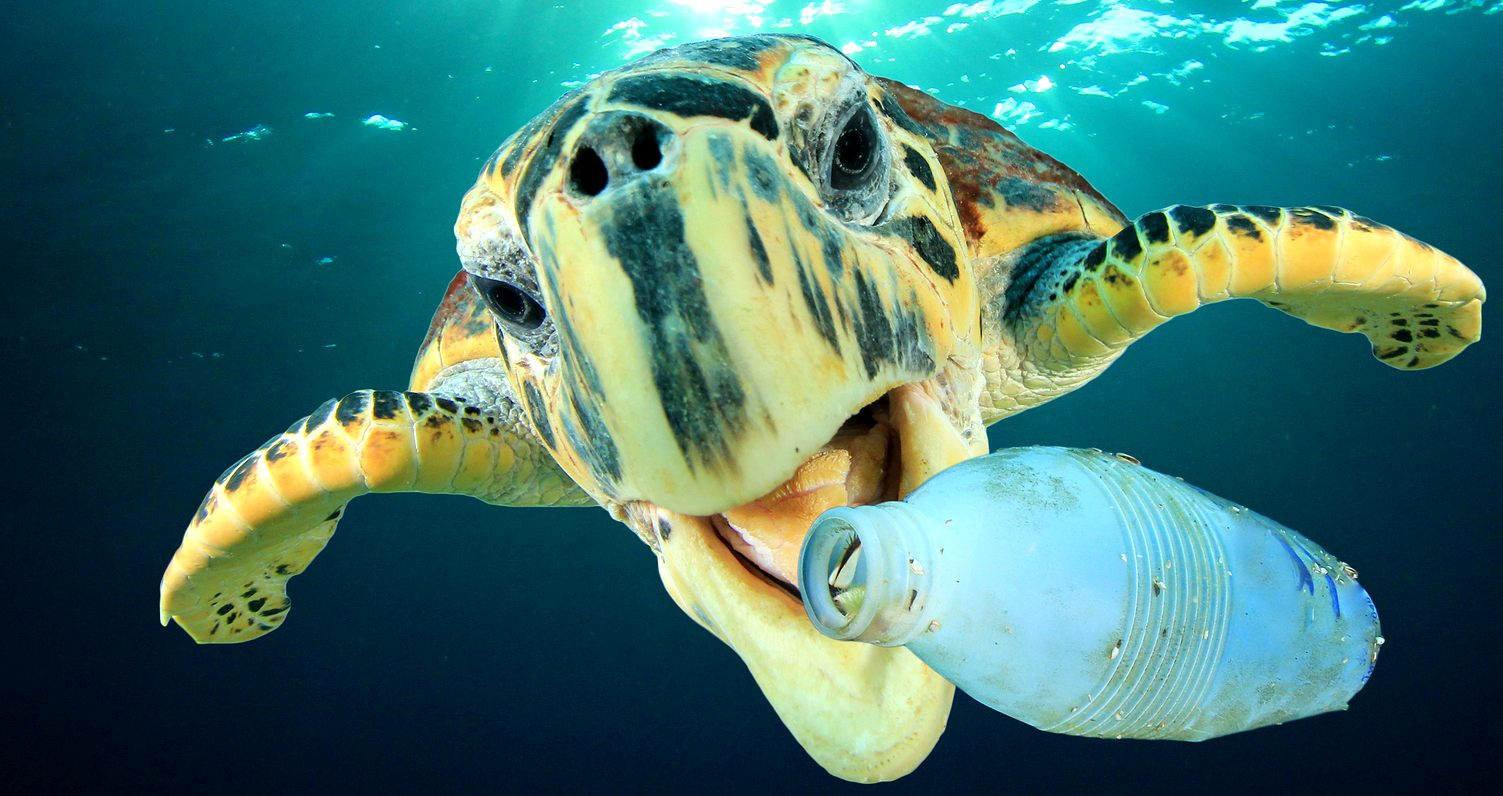|
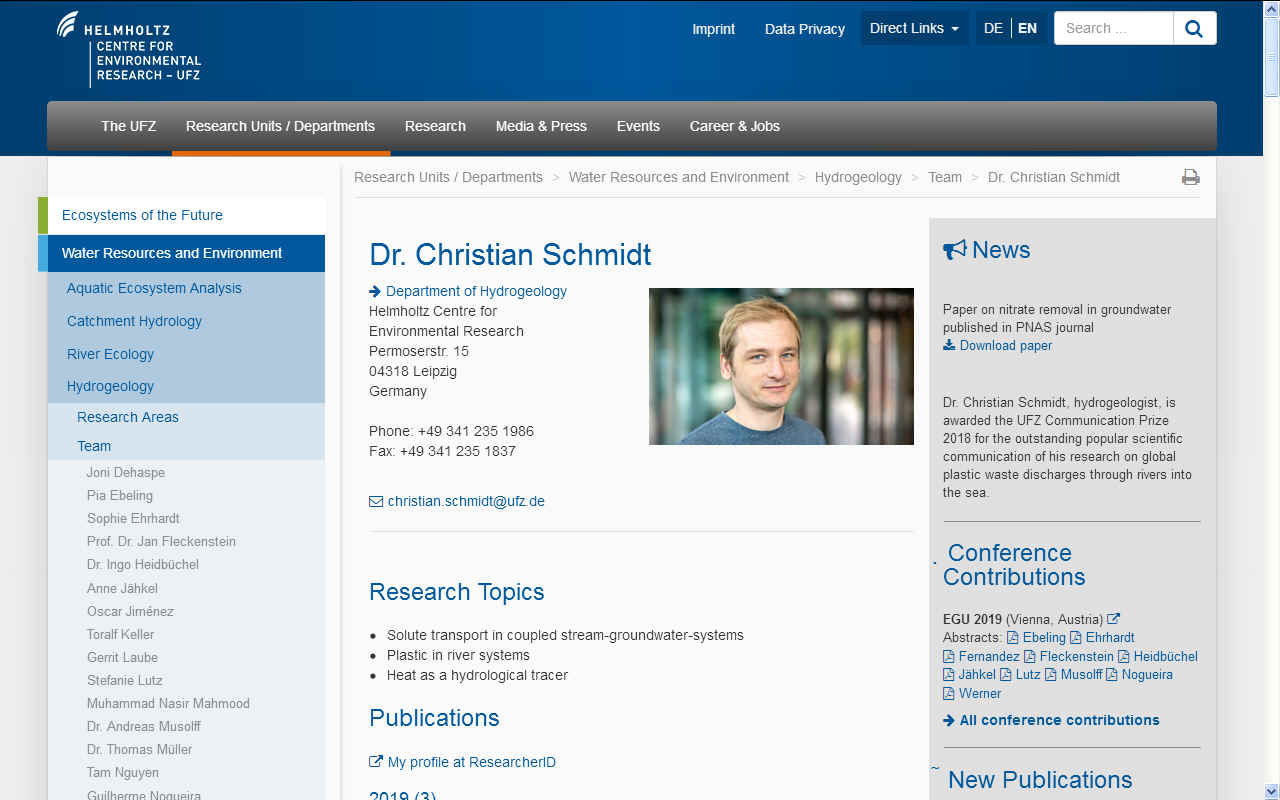
Export of plastic debris by rivers into the sea
Schmidt et al analyzed a global compilation of data on plastic debris in the
water column across a wide range of river sizes.
Plastic debris loads, both microplastic (particles <5 mm) and macroplastic (particles >5 mm) are positively related to the mismanaged plastic waste (MMPW) generated in the river catchments. This relationship is nonlinear where large rivers with population-rich catchments delivering a disproportionately higher fraction of MMPW into the sea.
The 10 top-ranked rivers transport 88–95% of the global load into the sea. Using MMPW as a predictor we calculate the global plastic debris inputs form rivers into the sea to range between 0.41 and 4 × 106 t/y.
Due to the limited amount of data high uncertainties were expected and ultimately confirmed. The empirical analysis to quantify plastic loads in rivers can be extended easily by additional potential predictors other than MMPW, for example, hydrological conditions.
THE
RIVER THAMES IS RELATIVELY GOOD
This compares to 18 tonnes a year by The Thames – which many would argue is still way too high but considerably less than the world’s worst river offenders.
Dr Christian Schmidt, of the Helmholtz Centre, said improving waste management in the river’s catchment areas would go a long way to curbing the plastic pollution problem.
“In countries such as China and India municipal waste is not all collected and even
if it is, it is often not properly dumped. Improving waste management in these countries should help to reduce the plastic pollution in rivers.”
Meanwhile, in industrial countries the waste collection rate is practically 100 per cent – but littering, synthetic clothing and household products such as toothpaste means that they are still poring plastic into the sea.
“The main source in developed countries is littering. This could be reduced if, for example, people would stop throwing food packaging out of their car windows,” Dr Schmidt said.
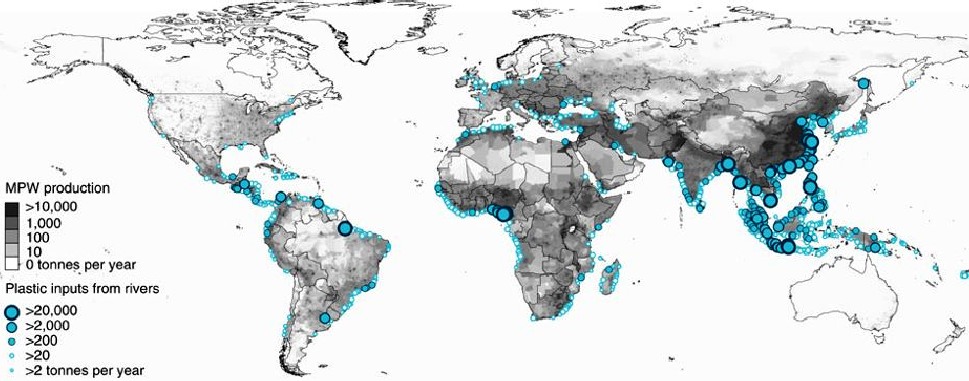
LEBRETON
2017 - Mass of river plastic flowing into oceans in tonnes per year.
River contributions are derived from individual watershed characteristics such as population density, mismanaged plastic waste
(MPW) production per country
and monthly averaged runoff. The model is calibrated against river plastic concentration measurements from Europe, Asia, North and South America.
THE GUARDIAN OCTOBER 2017 Every minute one rubbish lorry’s-worth of plastic is dumped into the sea. If we continue at this rate, some estimate that our oceans will contain more plastic than fish by 2050. So where does all the plastic come from? New research reveals that just 10 river systems transport more than 90% of the global input of plastic into to the world’s oceans.
Rivers are the arteries of our planet. From tiny tumbling streams to vast sluggish deltas, rivers are the link between the atmosphere, land and oceans. Since time immemorial people have clustered near rivers, taking advantage of the fresh water, fertile land, ready-made transport links and plentiful fish. And of course rivers are also excellent conveyor belts for whisking rubbish away.
By analysing how much plastic is carried by different rivers all over the world, and assessing the amount of littering in areas surrounding rivers, Christian Schmidt, of the Helmholtz Centre for Environmental Research in Germany, and his colleagues have shown that large river systems act as super-highways in transporting plastic to the sea.
Their research, published in the journal Environmental Science and Technology, shows that 10 river systems, located in heavily populated regions where littering is common, carry more than 90% of the plastic that ends up in the oceans.
Two are in Africa (the Nile and the Niger) while the other eight are in Asia (the Ganges, Indus, Yellow, Yangtze, Haihe, Pearl, Mekong and Amur).
“Halving the plastic input from the catchment areas of these rivers would already be a major success,” says Schmidt in a press statement. Next the researchers want to investigate the speed at which plastic travels from land to sea.
THE
DIRTY DOZEN - the ten biggest plastic carriers and which seas they feed:
Yangtze, River Yellow Sea, Asia
Indus, Arabian Sea, Asia
Yellow River, Yellow Sea, Asia
Hai He, Yellow Sea, Asia
Nile, Mediterranean, Africa
Meghna, Bay of Bengal, Asia
Ganges, South China Sea, Asia
Amur, Sea of Okhotsk, Asia
Niger, Gulf of Guinea, Africa
Mekong, South China Sea, Asia 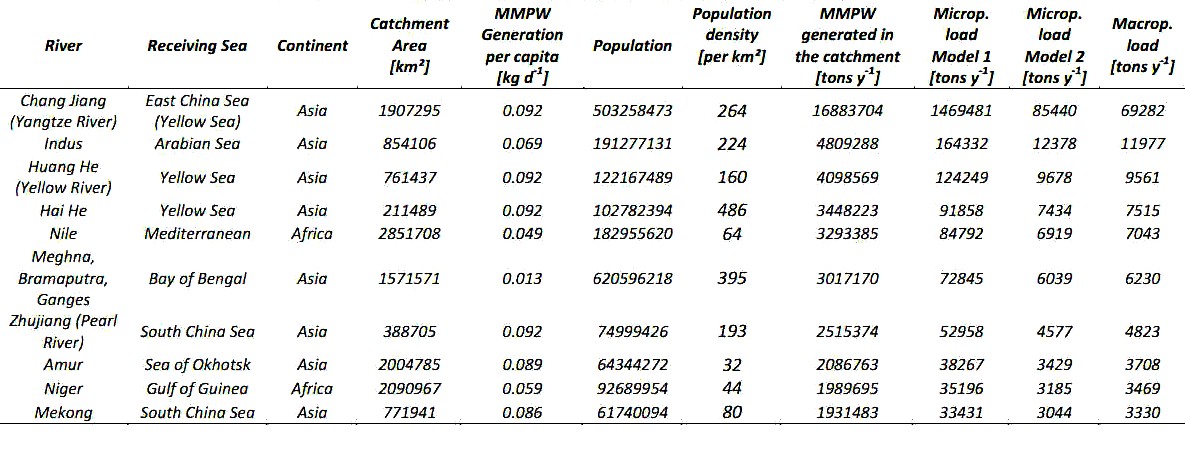
CONTACTS Helmholtz Centre for
Environmental Research
Permoserstr. 15
04318 Leipzig
Germany Phone: +49 341 235 1986
Fax: +49 341 235 1837
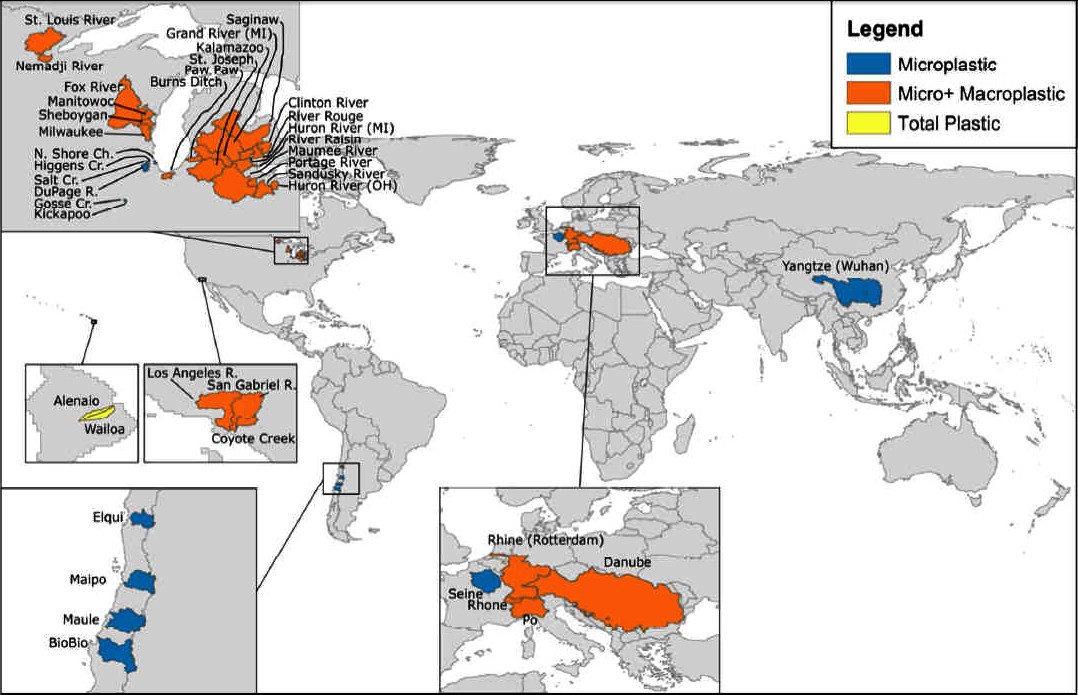
SCHMIDT
OCT 2017 - A substantial fraction of marine plastic debris originates from land-based sources.
Rivers potentially act as a major transport pathway for all sizes of plastic debris.

AUTHORS
Christian Schmidt: Department of Hydrogeology, Helmholtz- Centre for Environmental Research - UFZ, Permoserstrasse 15, 04318 Leipzig, Germany*
Tobias Krauth: Department of Environmental Engineering, University of Applied Sciences, Weihenstephan-Triesdorf, Markgrafenstrasse 16, 91746 Weidenbach, Germany (&*)
Stephan Wagner: Department of Analytical Chemistry, Helmholtz-Cen
tre for Environmental Research - UFZ, Permoserstrasse 15, 04318 Leipzig, Germany
*Corresponding author: christian.schmidt@ufz.de
CITE: Environ. Sci. Technol.2017512112246-12253 Publication
Date: October 11, 2017
https://doi.org/10.1021/acs.est.7b02368
This
river plastic article is cited by 53 publications
1. Thomas Mani, Sebastian Primpke, Claudia Lorenz, Gunnar Gerdts, Patricia Burkhardt-Holm. Microplastic Pollution in Benthic Midstream Sediments of the Rhine River. Environmental Science & Technology 2019, 53 (10) , 6053-6062. DOI: 10.1021/acs.est.9b01363.
2. Mala Trivedi, Manish Mathur, Parul Johri, Aditi Singh, Rajesh K. Tiwari. Waste Management: A Paradigm Shift. 2020,,, 337-363. DOI: 10.1007/978-981-13-6358-0_14.
3. Laurent Lebreton, Anthony Andrady. Future scenarios of global plastic waste generation and disposal. Palgrave Communications 2019, 5 (1) DOI: 10.1057/s41599-018-0212-7.
4. Timothy J. Hoellein, Arial J. Shogren, Jennifer L. Tank, Paul Risteca, John J. Kelly. Microplastic deposition velocity in streams follows patterns for naturally occurring allochthonous particles. Scientific Reports 2019, 9 (1) DOI: 10.1038/s41598-019-40126-3.
5. Jikke van Wijnen, Ad M.J. Ragas, Carolien Kroeze. Modelling global river export of microplastics to the marine environment: Sources and future trends. Science of The Total Environment 2019, 673, 392-401. DOI: 10.1016/j.scitotenv.2019.04.078.
6. Mateo Cordier, Takuro Uehara. How much innovation is needed to protect the ocean from plastic contamination?. Science of The Total Environment 2019, 670, 789-799. DOI: 10.1016/j.scitotenv.2019.03.258.
7. A.E. Schwarz, T.N. Ligthart, E. Boukris, T. van Harmelen. Sources, transport, and accumulation of different types of plastic litter in aquatic environments: A review study. Marine Pollution Bulletin 2019, 143, 92-100. DOI: 10.1016/j.marpolbul.2019.04.029.
8. P Agamuthu, SB Mehran, A Norkhairah, A Norkhairiyah. Marine debris: A review of impacts and global initiatives. Waste Management & Research 2019, 16, 0734242X1984504. DOI: 10.1177/0734242X19845041.
9. Charlotte Lefebvre, Claire Saraux, Olivier Heitz, Antoine Nowaczyk, Delphine Bonnet. Microplastics FTIR characterisation and distribution in the water column and digestive tracts of small pelagic fish in the Gulf of Lions. Marine Pollution Bulletin 2019, 142, 510-519. DOI:
10.1016/j.marpolbul.2019.03.025.
10. Eline Boelee, Gertjan Geerling, Bas van der Zaan, Anouk Blauw, A. Dick Vethaak. Water and health: From environmental pressures to integrated responses. Acta Tropica 2019, 193, 217-226. DOI:
10.1016/j.actatropica.2019.03.011.
11. Jerónimo Hernández-González, Iñaki Inza, Igor Granado, Oihane C. Basurko, Jose A. Fernandes, Jose A. Lozano. Aggregated outputs by linear models: An application on marine litter beaching prediction. Information Sciences 2019, 481, 381-393. DOI: 10.1016/j.ins.2018.12.083.
12. Yujuan Fan, Ke Zheng, Zewen Zhu, Guangshi Chen, Xianzhi Peng. Distribution, sedimentary record, and persistence of microplastics in the Pearl River catchment, China. Environmental Pollution 2019, DOI: 10.1016/j.envpol.2019.05.056.
13. Romain Tramoy, Johnny Gasperi, Rachid Dris, Laurent Colasse, Cédric Fisson, Sarah Sananes, Vincent Rocher, Bruno Tassin. Assessment of the Plastic Inputs From the Seine Basin to the Sea Using Statistical and Field Approaches. Frontiers in Marine Science 2019, 6 DOI: 10.3389/fmars.2019.00151.
14. Stephan Wagner, Thorsten Reemtsma. Things we know and don’t know about nanoplastic in the environment. Nature Nanotechnology 2019, 14 (4) , 300-301. DOI: 10.1038/s41565-019-0424-z.
15. J.H. Kandziora, N. van Toulon, P. Sobral, H.L. Taylor, A.J. Ribbink, J.R. Jambeck, S. Werner. The important role of marine debris networks to prevent and reduce ocean plastic pollution. Marine Pollution Bulletin 2019, 141, 657-662. DOI: 10.1016/j.marpolbul.2019.01.034.
16. Simon Turner, Alice A. Horton, Neil L. Rose, Charlotte Hall. A temporal sediment record of microplastics in an urban lake, London, UK. Journal of Paleolimnology 2019, 61 (4) , 449-462. DOI: 10.1007/s10933-019-00071-7.
17. Xiong Xiong, Chenxi Wu, James J. Elser, Zhigang Mei, Yujiang Hao. Occurrence and fate of microplastic debris in middle and lower reaches of the Yangtze River – From inland to the sea. Science of The Total Environment 2019, 659, 66-73. DOI: 10.1016/j.scitotenv.2018.12.313.
18. Mirjam Mheen, Charitha Pattiaratchi, Erik Sebille. Role of Indian Ocean Dynamics on Accumulation of Buoyant Debris. Journal of Geophysical Research: Oceans 2019, 124 (4) , 2571-2590. DOI: 10.1029/2018JC014806.
19. Nam-Shin Kim, Ju-Duk Yoon, Seung-Eun Lee, Young-Joon Park, Seung-Hyun Woo. A Study on the Residual Microplastics in Freshwater and Fishes in the Geum River Watershed.. Korean Journal of Ecology and Environment 2019, 52 (1) , 28-39. DOI: 10.11614/KSL.2019.52.1.028.
20. Ruth D. Rittinghaus, Pascal M. Schäfer, Pascal Albrecht, Christian Conrads, Alexander Hoffmann, Agnieszka N. Ksiazkiewicz, Olga Bienemann, Andrij Pich, Sonja Herres‐Pawlis. New Kids in Lactide Polymerization: Highly Active and Robust Iron Guanidine Complexes as Superior Catalysts. ChemSusChem 2019, 364 DOI: 10.1002/cssc.201900481.
21. Neil Angelo S. Abreo, Kirsten F. Thompson, Glio Florgiley P. Arabejo, Michael Dann A. Superio. Social media as a novel source of data on the impact of marine litter on megafauna: The Philippines as a case study. Marine Pollution Bulletin 2019, 140, 51-59. DOI: 10.1016/j.marpolbul.2019.01.030.
22. Marko Hyvärinen, Mikko Ronkanen, Timo Kärki. The effect of the use of construction and demolition waste on the mechanical and moisture properties of a wood-plastic composite. Composite Structures 2019, 210, 321-326. DOI: 10.1016/j.compstruct.2018.11.063.
23. Tim Kiessling, Katrin Knickmeier, Katrin Kruse, Dennis Brennecke, Alice Nauendorf, Martin Thiel. Plastic Pirates sample litter at rivers in Germany – Riverside litter and litter sources estimated by schoolchildren. Environmental Pollution 2019, 245, 545-557. DOI: 10.1016/j.envpol.2018.11.025.
24. Caitlin Wessel, Kathleen Swanson, Tracy Weatherall, Just Cebrian. Accumulation and distribution of marine debris on barrier islands across the northern Gulf of Mexico. Marine Pollution Bulletin 2019, 139, 14-22. DOI: 10.1016/j.marpolbul.2018.12.023.
25. Maryna Strokal, J Emiel Spanier, Carolien Kroeze, Albert A Koelmans, Martina Flörke, Wietse Franssen, Nynke Hofstra, Simon Langan, Ting Tang, Michelle TH van Vliet, Yoshihide Wada, Mengru Wang, Jikke van Wijnen, Richard Williams. Global multi-pollutant modelling of water quality: scientific challenges and future directions. Current Opinion in Environmental Sustainability 2019, 36, 116-125. DOI: 10.1016/j.cosust.2018.11.004.
26. Thomas Mani, Pascal Blarer, Florian R. Storck, Marco Pittroff, Theo Wernicke, Patricia Burkhardt-Holm. Repeated detection of polystyrene microbeads in the Lower Rhine River. Environmental Pollution 2019, 245, 634-641. DOI: 10.1016/j.envpol.2018.11.036.
27. Xin Zhang, Yifei Leng, Xiaoning Liu, Kai Huang, Jun Wang. Microplastics’ Pollution and Risk Assessment in an Urban River: A Case Study in the Yongjiang River, Nanning City, South China. Exposure and Health 2019, 159 DOI: 10.1007/s12403-018-00296-3.
28. Ellen Besseling, Paula Redondo-Hasselerharm, Edwin M. Foekema, Albert A. Koelmans. Quantifying ecological risks of aquatic micro- and nanoplastic. Critical Reviews in Environmental Science and Technology 2019, 49 (1) , 32-80. DOI: 10.1080/10643389.2018.1531688.
29. Adriane G. Ludwick, Heshmat A. Aglan. Renewability of Polymer-Based Thin Films for Packaging. 2019,, DOI: 10.1016/B978-0-12-803581-8.11294-9.
30. Jim Best. Anthropogenic stresses on the world’s big rivers. Nature Geoscience 2019, 12 (1) , 7-21. DOI: 10.1038/s41561-018-0262-x.
31. R. Tramoy, J. Gasperi, R. Dris, L. Colasse, C. Fisson, S. Sananes, V. Rocher, B. Tassin. Estimation des flux de plastiques transitant en Seine : quelles méthodes pour quels résultats ?. Techniques Sciences Méthodes 2019, 364 (1-2) , 15-26. DOI: 10.1051/tsm/201901015.
32. Tomoya Kataoka, Yasuo Nihei, Kouki Kudou, Hirofumi Hinata. Assessment of the sources and inflow processes of microplastics in the river environments of Japan. Environmental Pollution 2019, 244, 958-965. DOI: 10.1016/j.envpol.2018.10.111.
33. Marcelo C. Andrade, Kirk O. Winemiller, Priscilla S. Barbosa, Alessia Fortunati, David Chelazzi, Alessandra Cincinelli, Tommaso Giarrizzo. First account of plastic pollution impacting freshwater fishes in the Amazon: Ingestion of plastic debris by piranhas and other serrasalmids with diverse feeding habits. Environmental Pollution 2019, 244, 766-773. DOI: 10.1016/j.envpol.2018.10.088.
34. Raewyn M. Town, Herman P. van Leeuwen, Ronny Blust. Biochemodynamic Features of Metal Ions Bound by Micro- and Nano-Plastics in Aquatic Media. Frontiers in Chemistry 2018, 6 DOI: 10.3389/fchem.2018.00627.
35. Melanie Braun, Wulf Amelung. Synthetische Kunststoffe (Plastik). 2018,,, 1-44. DOI: 10.1002/9783527678501.bgs2018001.
36. Sven Seidensticker, Peter Grathwohl, Jonas Lamprecht, Christiane Zarfl. A combined experimental and modeling study to evaluate pH-dependent sorption of polar and non-polar compounds to polyethylene and polystyrene microplastics. Environmental Sciences Europe 2018, 30 (1) DOI: 10.1186/s12302-018-0155-z.
37. Roberto Crosti, Antonella Arcangeli, Ilaria Campana, Miriam Paraboschi, Daniel González-Fernández. ‘Down to the river’: amount, composition, and economic sector of litter entering the marine compartment, through the Tiber river in the Western Mediterranean Sea. Rendiconti Lincei. Scienze Fisiche e Naturali 2018, 29 (4) , 859-866. DOI: 10.1007/s12210-018-0747-y.
38. Seán Lynch. OpenLitterMap.com – Open Data on Plastic Pollution with Blockchain Rewards (Littercoin). Open Geospatial Data, Software and Standards 2018, 3 (1) DOI: 10.1186/s40965-018-0050-y.
39. Sara L. Belontz, Patricia L. Corcoran, Heather Davis, Kathleen A. Hill, Kelly Jazvac, Kirsty Robertson, Kelly Wood. Embracing an interdisciplinary approach to plastics pollution awareness and action. Ambio 2018, 10 DOI: 10.1007/s13280-018-1126-8.
40. Mengyu Bai, Lixin Zhu, Lihui An, Guyu Peng, Daoji Li. Estimation and prediction of plastic waste annual input into the sea from China. Acta Oceanologica Sinica 2018, 37 (11) , 26-39. DOI: 10.1007/s13131-018-1279-0.
41. Tim van Emmerik, Thuy-Chung Kieu-Le, Michelle Loozen, Kees van Oeveren, Emilie Strady, Xuan-Thanh Bui, Matthias Egger, Johnny Gasperi, Laurent Lebreton, Phuoc-Dan Nguyen, Anna Schwarz, Boyan Slat, Bruno Tassin. A Methodology to Characterize Riverine Macroplastic Emission Into the Ocean. Frontiers in Marine Science 2018, 5 DOI: 10.3389/fmars.2018.00372.
42. Maria Kazour, Sharif Jemaa, Maria El Rakwe, Guillaume Duflos, Ludovic Hermabassiere, Alexandre Dehaut, Florane Le Bihanic, Jerome Cachot, Vincent Cornille, Khalef Rabhi, Gaby Khalaf, Rachid Amara. Juvenile fish caging as a tool for assessing microplastics contamination in estuarine fish nursery grounds. Environmental Science and Pollution Research 2018, 627 DOI: 10.1007/s11356-018-3345-8.
43. Sven Huppertsberg, Thomas P. Knepper. Instrumental analysis of microplastics—benefits and challenges. Analytical and Bioanalytical Chemistry 2018, 410 (25) , 6343-6352. DOI: 10.1007/s00216-018-1210-8.
44. Martín C.M. Blettler, Elie Abrial, Farhan R. Khan, Nuket Sivri, Luis A. Espinola. Freshwater plastic pollution: Recognizing research biases and identifying knowledge gaps. Water Research 2018, 143, 416-424. DOI: 10.1016/j.watres.2018.06.015.
45. Elizabeth Mendenhall. Oceans of plastic: A research agenda to propel policy development. Marine Policy 2018, 96, 291-298. DOI: 10.1016/j.marpol.2018.05.005.
46. Christopher J. Rhodes. Plastic Pollution and Potential Solutions. Science Progress 2018, 101 (3) , 207-260. DOI: 10.3184/003685018X15294876706211.
47. Tamyris de Souza e Silva Pegado, Kurt Schmid, Kirk O. Winemiller, David Chelazzi, Alessandra Cincinelli, Luigi Dei, Tommaso Giarrizzo. First evidence of microplastic ingestion by fishes from the Amazon River estuary. Marine Pollution Bulletin 2018, 133, 814-821. DOI: 10.1016/j.marpolbul.2018.06.035.
48. L. Katharina Schmidt, Mathias Bochow, Hannes K. Imhof, Sascha E. Oswald. Multi-temporal surveys for microplastic particles enabled by a novel and fast application of SWIR imaging spectroscopy – Study of an urban watercourse traversing the city of Berlin, Germany. Environmental Pollution 2018, 239, 579-589. DOI: 10.1016/j.envpol.2018.03.097.
49. Yu Fang, Serena Ceola, Kyungrock Paik, Gavan McGrath, P. Suresh C. Rao, Alberto Montanari, James W. Jawitz. Globally Universal Fractal Pattern of Human Settlements in River Networks. Earth's Future 2018, 6 (8) , 1134-1145. DOI: 10.1029/2017EF000746.
50. R. Jacobsen, G. Willeghems, X. Gellynck, J. Buysse. Increasing the quantity of separated post-consumer plastics for reducing combustible household waste: The case of rigid plastics in Flanders. Waste Management 2018, 78, 708-716. DOI: 10.1016/j.wasman.2018.06.025.
51. Wenfeng Wang, Wenke Yuan, Yuling Chen, Jun Wang. Microplastics in surface waters of Dongting Lake and Hong Lake, China. Science of The Total Environment 2018, 633, 539-545. DOI: 10.1016/j.scitotenv.2018.03.211.
52. Florin-Constantin Mihai. Rural plastic emissions into the largest mountain lake of the Eastern Carpathians. Royal Society Open Science 2018, 5 (5) , 172396. DOI: 10.1098/rsos.172396.
53. Ji-Hyung Park, Omme K. Nayna, Most S. Begum, Eliyan Chea, Jens Hartmann, Richard G. Keil, Sanjeev Kumar, Xixi Lu, Lishan Ran, Jeffrey E. Richey, Vedula V. S. S. Sarma, Shafi M. Tareq, Do Thi Xuan, Ruihong Yu. Reviews and syntheses: Anthropogenic perturbations to carbon fluxes in Asian river systems – concepts, emerging trends, and research challenges. Biogeosciences 2018, 15 (9) , 3049-3069. DOI: 10.5194/bg-15-3049-2018. 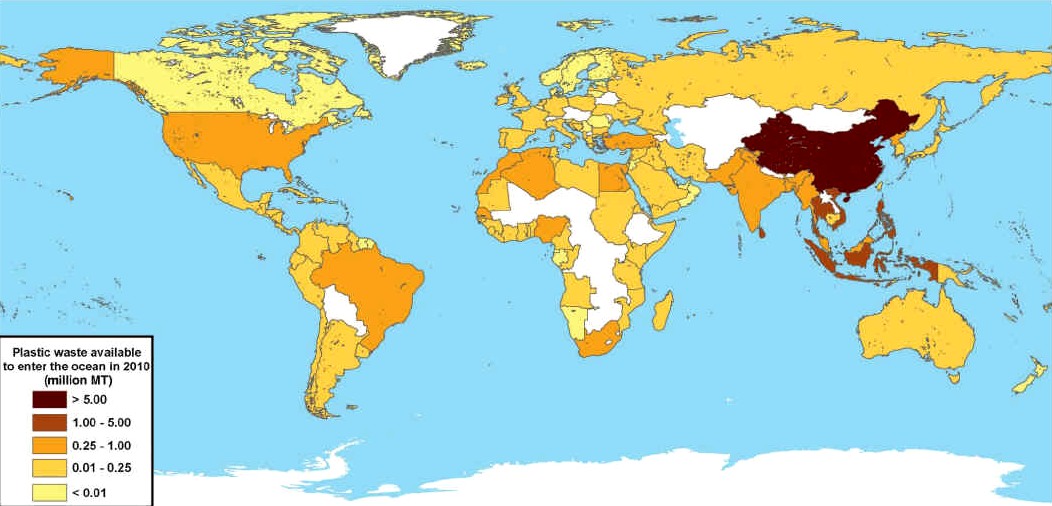
JAMBECK
2010 - Global map with each country shaded according to the estimated mass of mismanaged plastic waste [millions ofmetric tons (MT)] generated in 2010 by populations living within 50 km of the coast. 192 countries were considered. Countries not included in the study are shaded white.
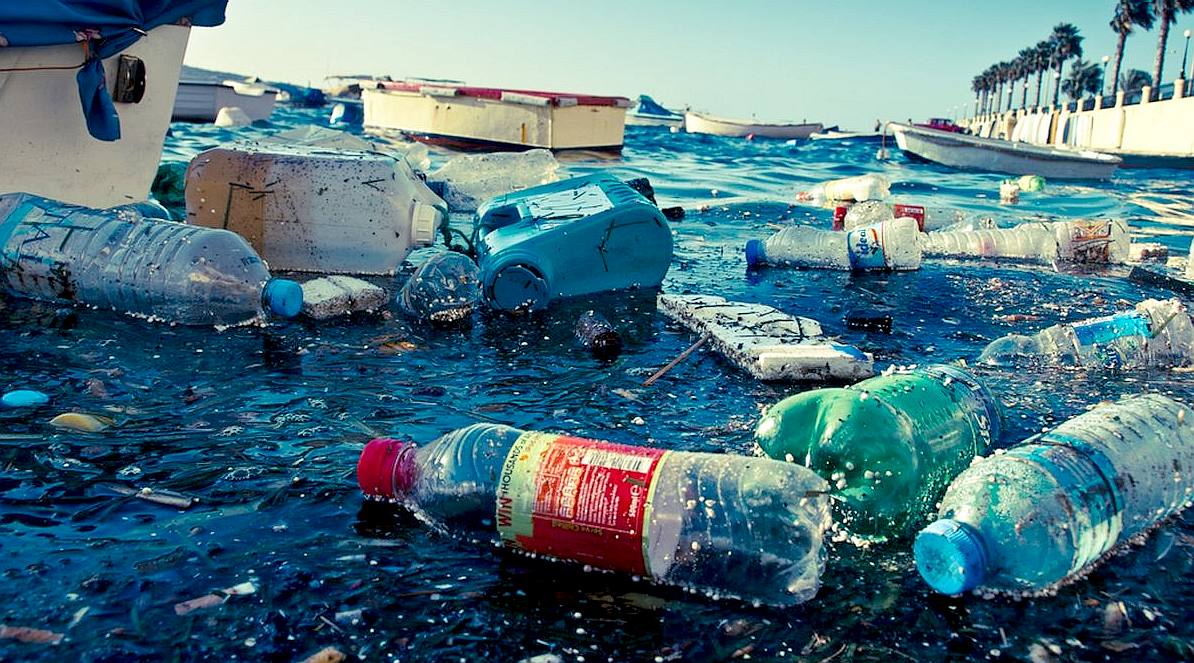
FAST
FOOD SLOW RECOVERY - If we all work
together we can significantly impact on scenes like this. We have been
enjoying the benefits of plastic without ensuring that this durable
medium does not unduly affect marine life. Unfortunately, retrospective
measures will take longer to achieve equilibrium, but we must act now if
we want to prevent more plastic than fish in the sea by 2050.
Fortunately, many of the top producers are now looking at circularizing with
a view to preventing ocean waste, such as the Alliance
to End Plastic Waste.
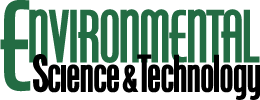
LINKS
& REFERENCE
https://
https://www.ufz.de/index.php?en=38353
https://www.theguardian.com/science/2017/nov/05/terrawatch-the-rivers-taking-plastic-to-the-oceans
https://pubs.acs.org/doi/pdf/10.1021/acs.est.7b02368#
|








